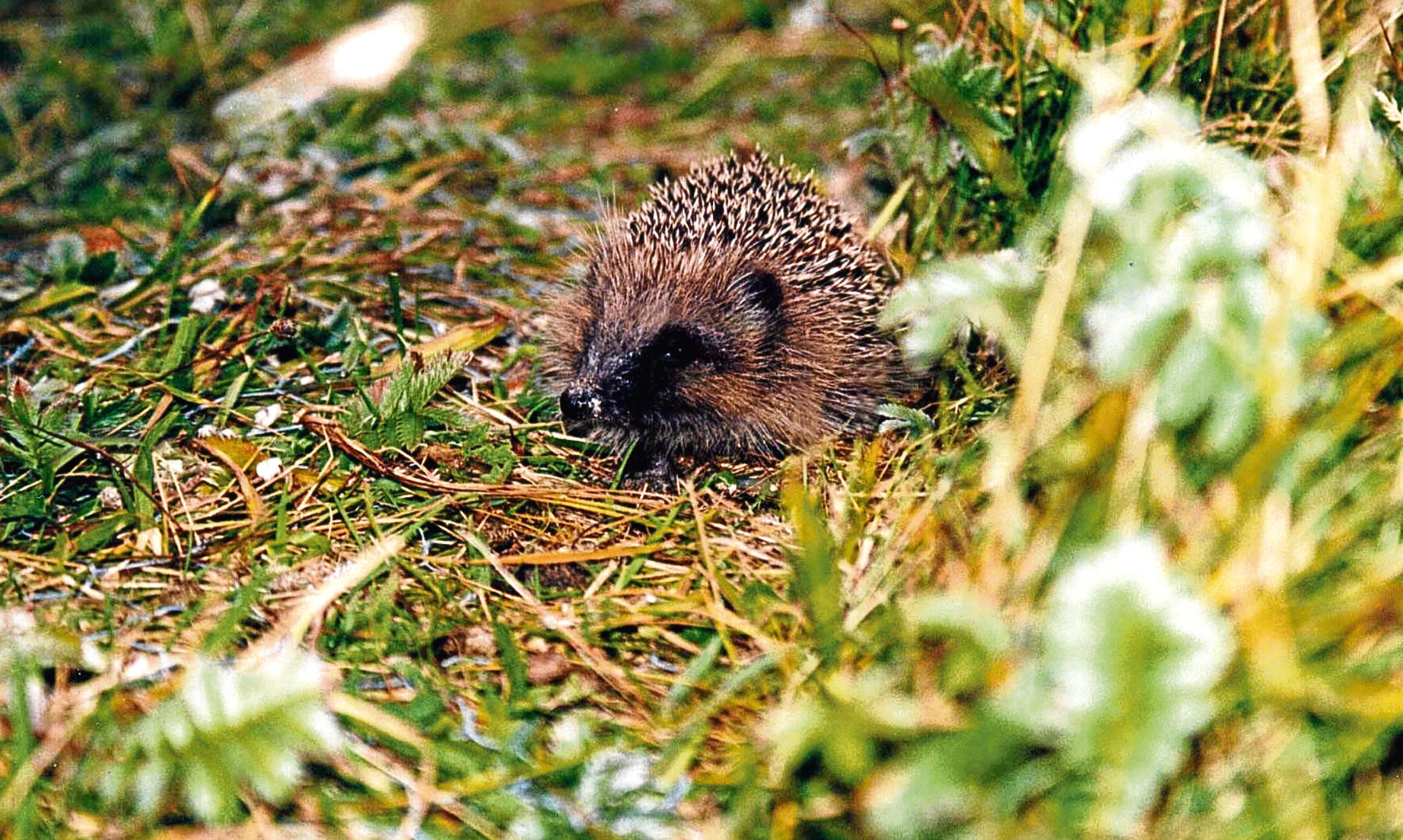Many years ago brown hares were a common sight on the ploughed fields at this time of year but around the mid-1970s their numbers declined sharply.
Predation and loss of habitat due to changes in farming practice were two of the explanations suggested for the downturn but I’m not sure that a definitive explanation has ever been given. Over recent years their numbers have slowly recovered, though I doubt if they will return to their previous level in my lifetime.
I stopped my car to watch a pair sitting companionably together in a stubble field. They are bonny animals, the embodiment of the wild, ever on the alert for danger, their large, black-tipped radar ears receiving and decoding all the messages coming from round about them.
There was no sign of any Mad March hare boxing, which is mistakenly thought to be two males fighting for the affections of a female. In reality it’s a female fighting off the attentions of a male which is ready for mating when she is not.
As an ecological aside, there used to be a colony of ginger hares on Kinnaber Moor on the outskirts of Montrose where Montrose Air Station, the first operational military air station of the First World War was established in 1913. Perhaps the hares moved elsewhere due to increased dog walking activity or, more likely, their hybrid strain just died out but I have heard nothing of them for years.
A thing that drove Inka One, the current Inka’s grandfather, demented, was hedgehogs. He didn’t want to pick them up and raced round them barking hysterically while the hedgehog, sensibly, rolled itself into its protective ball.
Inka Two has inherited his grandfather’s aversion so when I saw him stamping the ground with his front paws and whining I knew exactly what it meant. Hedgehogs are mainly nocturnal animals and Inka disturbed this one curled up in the undergrowth.
Hedgehogs have a varied diet which includes insects, slugs, worms, small frogs in season and eggs of ground nesting birds – more than enough you would think to sustain high numbers in the wild. But their numbers have declined so much they are heading for the endangered list.
The one place in Scotland where hedgehogs have thrived, for the time being at least, is the Outer Hebrides islands of North Uist, Benbecula and South Uist.
In the early 1970s they were introduced to the islands by enthusiastic gardeners to clean up garden slugs.
It turned out to be a terrible mistake. The islands are home to internationally important populations of ground-nesting waders including lapwing, dunlin, ringed plover, redshank and snipe.
In spring when the hedgehogs awoke, hungry from their winter hibernation, there was abundance of birds’ eggs and chicks for them to feed on. The plentiful feeding stimulated reproduction and for a time their predation put the future of the wader populations under serious pressure.
To rid the islands of what is a non-native species, Scottish Natural Heritage (SNH) undertook a long-term removal programme, trapping the hedgehogs live and returning them to the Scottish mainland for release. North Uist has been completely clear of hedgehogs for more than a year and once SNH secures further funding, the project will be rolled out to Benbecula and South Uist.
Hopefully it will restore the ecological balance in the islands but other long-term solutions will have to be found to restore the mainland numbers to anywhere near their past level.
Walking with Inka on a woodland track, a woodcock rose from rough grass and flitted off ahead of us, jouking and jinking low between the trees. Woodcock are essentially wading birds with a long, straight beak, a dumpy body and short legs, which have adapted to a woodland environment.
Their russet plumage and barred head and breast are in complete harmony with their surroundings and, for me, they are probably the most appealing of the woodland birds. Although autumn migrants from northern Europe augment our resident breeding population over the winter, sadly, there are conservation concerns for the woodcocks’ future too.
As an artistic aside, woodcock have a short, stiff pin feather on the elbow joint of each wing which was prized by Victorian artists for painting very fine lines.
There are active plans to reintroduce lynx and wolves to the Scottish countryside, which is wrapped up as something called rewilding.
I am unconvinced of the ecological benefits of reintroducing two animals missing from the Scottish landscape for hundreds of years which, for practical purposes, are no longer native species.
The enthusiasm, effort and money involved could be put to so much more effective use sustaining our woodcock, brown hares and hedgehogs, Scottish wildcats, Hebridean waders, water voles, cold water coral reefs, butterflies, bees and many more, and their habitats.
It is reckoned that 10% of Scotland’s wildlife and landscape is at risk from human intervention. Until we humans seriously make up our minds to turn around many of our ideas it seems to be the way of the world that as man and his activities increase, wildlife diminishes.
